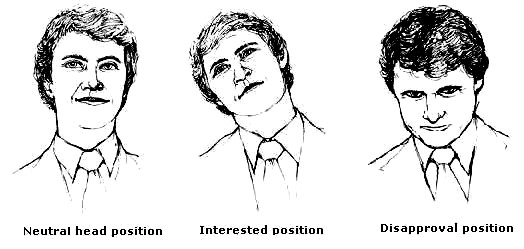Academics• University Grants Commission -
http://www.ugc.ac.in/• Central Board Of Secondary Education -
http://www.cbse.nic.in/• Delhi University -
http://www.du.ac.in/• Jawaharlal Nehru University -
http://www.jnu.ac.in/• National Council for Teacher Education -
http://www.ncte-in.org/• National Council for Educational Research & Training -
http://www.ncert.nic.in/• Ministry of HRD (Education) -
http://www.education.nic.in/Aviation• Directorate General of Civil Aviation -
http://www.dgca.nic.in/• IATA training -
http://www.iata.org/• Ministry of Civil Aviation -
http://www.civilaviation.nic.in/• Indira Gandhi Rashtriya Uran Akademi -
http://www.igrua.gov.in/Banking• Reserve Bank of India -
http://www.rbi.org.in/• State Bank of India -
http://www.statebankofindia.com/• Panjab National Bank -
http://www.pnbindia.com/• Corporation Bank -
http://www.corpbank.com/Civil - Services• Union Public Service Commission -
www.upsc.gov.in/• Staff Selection Commission -
ssc.nic.in• Department of Personal & Training -
http://www.dopt.nic.in/Defence• National Defence Academy -
http://www.nda.nic.in/• Indian Army -
http://www.indianarmy.nic.in/• Join Indian Army -
http://www.joinindianarmy.nic.in/ • Indian Air Force -
http://www.indianairforce.nic.in/ • Indian Navy -
http://www.indiannavy.nic.in/Engineering• All India Council of Technical Education -
http://www.aicte.ernet.in/ • The Institutions of Engineers (India) -
http://www.ieindia.org/• IIT-Kharagpur -
http://www.iitkgp.ac.in/• Bureau of Energy Efficiency -
http://www.bee.gov.in/• Distance Education Council for distance education in Engineering -
http://www.dec.ac.in/ • Joint Entrance Examination (Orissa) -
http://www.jeeorissa.com/Finance• The Institute Of Chartered Accountant –
http://www.employmentnews.gov.in/www.icai.org• The Institute Of Company Secretaries of India –
http://www.icsi.edu/• National Stock exchange of India -
http://www.nseindia.com/• Bombay Stock exchange -
http://www.bseindia.com/• Indian Institute of Banking & Finance –
http://www.iibf.org.in/• Indian Institute of Statistical Institute -
http://www.isical.ac.in/Hospitality• Incredible India -
http://www.incredibleindia.org/• Ministry of Tourism -
http://www.tourisminindia.com/IT• NASSCOM -
http://www.nasscom.in/• Ministry of IT -
http://www.mit.gov.in/• DOECC -
http://www.doeacc.edu.in/• Centre For Development of Advance Computing -
http://www.cdac.in/• Indian Institute of Technology Madras -
http://www.iitm.ac.in/Law• Supreme Court of India -
http://www.supremecourtofindia.nic.in/ • Ministry of Law & Justice -
http://www.lawmin.nic.in/• National Commission for Women -
http://www.ncw.nic.in/• Central Administrative Tribunal -
http://www.cgat.gov.in/Library Science• Raja Rammohun Roy Library foundation -
http://www.rrrlf.nic.in/ • National Archives Of India -
http://www.nationalarchives.gov.in/Management• Indian Institute of Management, Calcutta -
http://www.iimcal.ac.in/• Indian Institute of Management, Ahmedabad -
http://www.iimahd.ernet.in/Media• Indian Institute of Mass Commission -
http://www.iimc.nic.in/• Publications Division -
http://www.publicationsdivision.nic.in/• DoorDarshan -
http://www.ddindia.com/• Directorate Of Advertising and Visual Publicity -
http://www.davp.nic.in/ • Press Information Bureau -
http://www.pib.nic.in/Medicine• Ministry of Health & Welfare -
http://www.mohwf.nic.in/• Department of Ayurveda, Yoga & Naturopathy, Unani, Siddha and Homoeopathy (AYUSH) -
http://www.indianmedicine.nic.in/ • National Aids Control Organisation -
http://www.nacoonline.org/• Armed Forces Medical College -
http://www.armedforces.nic.in/Railways• Indian Railways -
http://www.indianrail.gov.in/ • Indian Railways -
http://www.indianrailways.gov.in/ • Ministry of Railways -
http://www.railnet.gov.in/• IRCON -
http://www.ircon.org/• Indian Railway Catering and Tourism Corporation Ltd. -
http://www.irctc.co.in/Retail• Indian Institute of Social Welfare and Business Management, Kolkata -
http://www.iiswbm.edu/• CII Institute of Logistics, Chennai -
http://www.ciilogistics.com/• Gobind Ballabh Pant University -
http://www.gbpuat.ac.in/• Annamalai University -
http://www.annauniv.edu/• Indian Institute of Foreign Trade, -
http://www.iift.edu/Science• Jawaharlal Nehru Technological University -
http://www.jntu.ac.in/• IIT Bombay -
http://www.iitb.ac.in/• Mumbai University -
http://www.mu.ac.in/• Indian School of Mines, Dhanbad -
http://www.ismdhanbad.ac.in/• CSIR-UGC (NET) -
http://www.csirhrdg.res.in/• Indian Council of Medical Research, -
http://www.icmr.nic.in/• Birla Institute of Technology, Ranchi -
http://www.bitmesra.ac.in/• Madurai Kamaraj University, Madurai -
http://www.mkudde.org/• Indian Institute of Technology, Kharagpur -
http://www.iitkgp.ernet.in/• Central Institute of Fisheries Nautical and Engineering Training -
http://www.cifnet.nic.in/• Bioinformatics Institute of India -
http://www.bioinformaticscentre.org/ Science-IPR/PATENTS• Patent Office, Govt of India -
http://www.ipindia.nic.in/• Institute of Intellectual Property Studies, Mumbai -
http://www.iips.ac.in/• National Law School of India University, Nagarbhavi -
http://www.nls.ac.in/• Indian Institute of Information Technology, Allahabad (Deemed University) -
http://www.iiita.ac.in/ Self Entrepreneurship• Central Marine Fisheries Research Institute, Kochi -
http://www.cmfri.com/• Tata Institute of Social Sciences, Mumbai -
http://www.tiss.edu/• Ministry of Labour & Employment (Directorate General of Employment & Training) ADVANCED TRAINING INSTITUTE -
http://dget.nic.in/atikanpurPharmacy• Academy for Clinical Excellence (ACE) -
http://www.aceindia.org/• Institute of Clinical Research (ICRI) -
http://www.icriindia.com/• Bombay College of Pharmacy -
http://www.bcpindia.org/• Jamia Hamdarad Islamia -
http://www.jmi.ac.in/• National Institute of Pharmaceutical Education & Research (NIPER). S.A.S. Nagar, Punjab -
http://www.niper.nic.in/• Guru Jambeshwar University, Hisar -
http://www.gju.ernet.in/
 (23 JULY 2011 - 29 JULY 2011)
(23 JULY 2011 - 29 JULY 2011)































